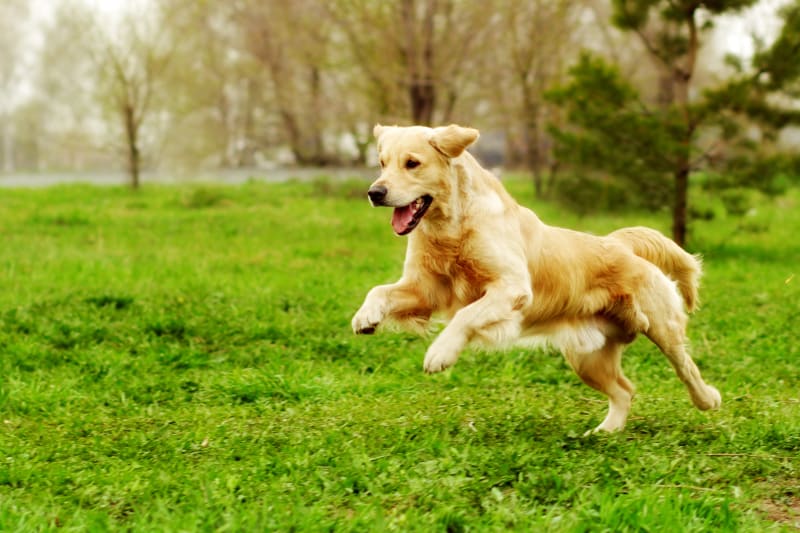Did you know your pup can tear ligaments in their knees just like humans? The canine version of the ACL is called the cranial cruciate ligament (CCL). Partial and complete tears of the CCL can affect dogs of all shapes, sizes, and breeds. Jumping, running, and other movements can easily lead to tears if the behavior is nonstop. Thankfully, there are ways to help reconstruct your pup’s leg and get them back up and running!
How does a CCL tear happen?
Dogs usually partially tear their ligament a little at a time, but can have a significant injury that fully tears it all at once. Oftentimes it will start with a quick sudden movement such as a jump or sharp turn while playing or running. Over time, the tear will progressively get worse and can lead to worsening symptoms. If your dog is displaying any of the following symptoms, they might have a torn CCL:
● Limping
● Pain
● Lameness in the hind legs
● Clear favoritism of one leg
● Lack of activity
● Lethargic
Without attention, a torn CCL can result in chronic pain, arthritis, and poor joint health in the future.
What are my options?
There are a few procedures that can help correct your dog’s CCL injury, but now we’ll compare the so called geometry modifying procedures. These are usually suited to larger and more active dogs. These are called Modified Maquet Procedure, also referred to as MMP and Tibial Plateau Leveling Osteotomy, also known as TPLO.
MMP vs. TPLO
MMP and TPLO are both effective procedures, and work by cutting through bone and repositioning it to change the anatomy inside the knee. MMP surgery is a little less invasive, less expensive, and quicker to perform. Both surgeries have a fairly quick recovery. Breed, size, activity level, and age are all factors that your vet will consider before performing either surgery.
What’s the recovery time?
Oftentimes, dogs don’t understand why they’re injured or how to take care of an injury, so a quick recovery time is crucial. Your pup just knows something hurts, and the less time they have to spend in pain, the better. TPLO usually has a recovery time of ten to twelve weeks, while MMP recovery time is slightly shorter at about eight to ten weeks. Within two days of having an MMP, your dog will start putting some weight on their leg while walking. Two weeks after the surgery, you can begin taking your pet on slow walks of 5-10 minutes periodically throughout the day. After three or four weeks, you’ll be able to increase activity gradually. At the five or six-week mark, your vet will take an x-ray to make sure everything is healing according to plan. If everything looks good, you can walk your dog for up to 30 minutes a day. Somewhere between eight and twelve weeks after surgery, your dog should be fully healed and ready to play full time!
If your dog is experiencing signs of pain, limping, or another injury, be sure to talk to your vet or visit our site to learn more. Our experienced staff can recommend the best course of treatment to keep your dog active and healthy! Contact us for an appointment today!

